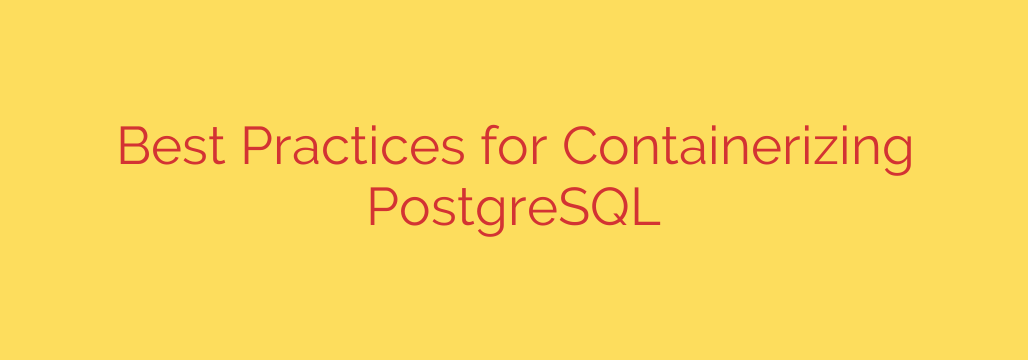
Successfully running PostgreSQL in containers requires careful adherence to specific practices to ensure data integrity, performance, and reliability. The foremost concern is data persistence. Database data must reside outside the container filesystem itself. Utilizing volumes or bind mounts is essential for storing data persistently on the host system or networked storage, decoupling the data lifecycle from the container lifecycle. This prevents data loss when containers are stopped, removed, or updated.
Proper configuration management is another critical aspect. Database settings, user credentials, and configuration files should not be baked directly into the container image. Instead, use environment variables, configuration files mounted as volumes, or dedicated configuration management tools provided by your orchestration platform. This allows for flexible configuration changes without rebuilding the container image and keeps sensitive information separate.
Setting appropriate resource limits (CPU and memory) for the database container is vital. Databases are resource-intensive, and uncontrolled resource usage can impact other services on the same host or cause instability. Defining limits prevents resource starvation and helps maintain predictable performance.
Implementing robust health checks is necessary for orchestration platforms to monitor the database container’s state. Liveness and readiness probes ensure that the database is not only running but also responsive and ready to accept connections before traffic is routed to it.
Choosing the right container image is also important. Prefer using the official PostgreSQL image available on trusted repositories like Docker Hub. Official images are typically well-maintained, secure, and follow standard practices. Avoid building custom images unless absolutely necessary, and if you do, base them on official images and keep them minimal.
Security must be a top priority. Never hardcode sensitive credentials like database passwords in the Dockerfile or plain text configuration files. Use secrets management solutions provided by your orchestration platform (e.g., Kubernetes Secrets, Docker Swarm Secrets, HashiCorp Vault). Furthermore, run the database process inside the container as a non-root user to minimize potential security risks.
Finally, integrate the containerized database into your existing monitoring and logging infrastructure. Centralize logs from the container for easier debugging and auditing. Collect database metrics (like connections, queries, resource usage) using suitable agents or exporters to gain visibility into performance and health. Planning for backup and restore procedures specifically for the externalized persistent data is also a crucial step for disaster recovery. By following these guidelines, you can leverage the benefits of containerization while maintaining the reliability and security required for a production database.
Source: https://infotechys.com/postgresql-containerization-best-practices/








